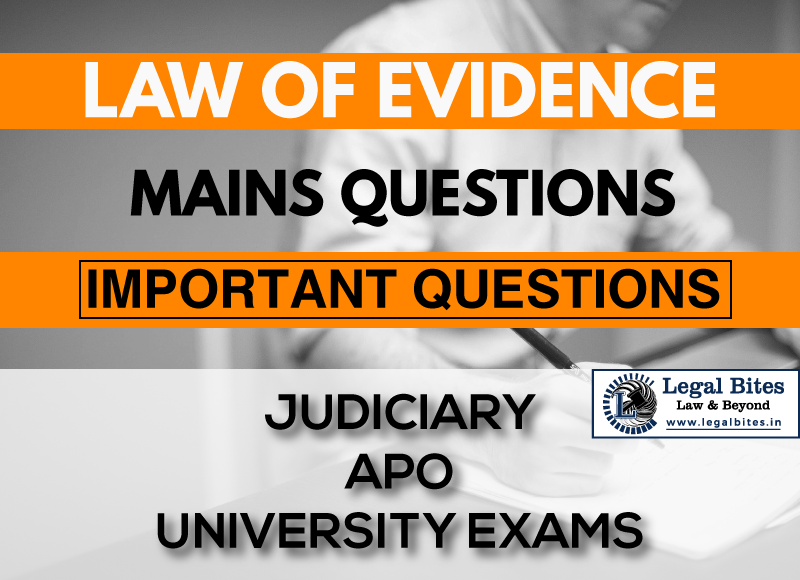What facts are relevant to determine the number of damages?
Question: What facts are relevant to determine the number of damages? Find the answer to the mains question only on Legal Bites. [What facts are relevant to determine the number of damages?] Answer Section 12, Indian Evidence Act deals with provision for when In suits for damages, facts tending to enable Court to determine amount are relevant. It… Read More »

Question: What facts are relevant to determine the number of damages? Find the answer to the mains question only on Legal Bites. [What facts are relevant to determine the number of damages?] Answer Section 12, Indian Evidence Act deals with provision for when In suits for damages, facts tending to enable Court to determine amount are relevant. It states- In suits in which damages are claimed, any fact which will enable the Court to determine the number of damages which ought to be awarded...
Question: What facts are relevant to determine the number of damages?
Find the answer to the mains question only on Legal Bites. [What facts are relevant to determine the number of damages?]
Answer
Section 12, Indian Evidence Act deals with provision for when In suits for damages, facts tending to enable Court to determine amount are relevant.
It states-
In suits in which damages are claimed, any fact which will enable the Court to determine the number of damages which ought to be awarded is relevant.
This section enables the court to admit any facts which will help it to determine the number of damages that ought to be awarded to a party. When damages are claimed in a suit, the amount of damages is a fact in issue.
“Damages” are the pecuniary satisfaction which the plaintiff may obtain by success in an action. Section 73 of the Indian Contract Act lays down the rule governing damages in actions on contract. They are limited to the loss which the plaintiff has actually sustained.
Under this section, it may be laid down generally that evidence tending to determine, i.e., to increase or diminish the damages, is admissible though not expressly involved in the issue.
Thus, in an action for breach of promise of marriage, the plaintiff may give evidence of the defendant’s fortunes; for it obviously tends to prove the loss sustained by the plaintiff; but not in an action for adultery; nor for malicious prosecution. But the evidence of the number of damages, which is the necessary and obvious result of the defendant’s breach of contract, or of his tort, may be proved, though only alleged generally in the plaint.
In the case of Shaikh Gafoor v. State of Maharashtra, AIR 2008 NOC 1637 (Bom), where digging canal caused damage to the crops on the plaintiff’s adjoining land. Where the plaintiff failed to adduce the best available evidence and this caused difficulty in assessing damages, this was held to be no ground for refusing damages or fixing nominal damages. It is for the court to determine the quantum of damages.
Important Mains Questions Series for Judiciary, APO & University Exams
- Law of Evidence Mains Questions Series Part-I
- Law of Evidence Mains Questions Series Part-II
- Law of Evidence Mains Questions Series Part-III
- Law of Evidence Mains Questions Series Part-IV
- Law of Evidence Mains Questions Series Part-V
- Law of Evidence Mains Questions Series Part-VI
- Law of Evidence Mains Questions Series Part-VII
- Law of Evidence Mains Questions Series Part-VIII
- Law of Evidence Mains Questions Series Part-IX
- Law of Evidence Mains Questions Series Part-X
Admin Legal Bites
Legal Bites Study Materials correspond to what is taught in law schools and what is tested in competitive exams. It pledges to offer a competitive advantage, prepare for tests, and save a lot of money.
